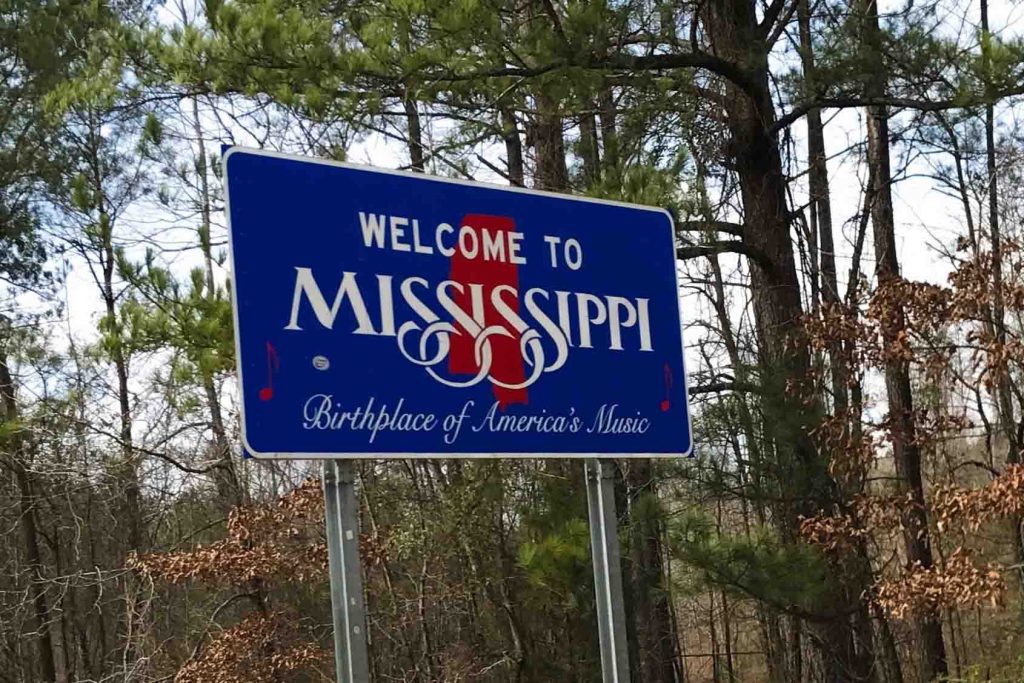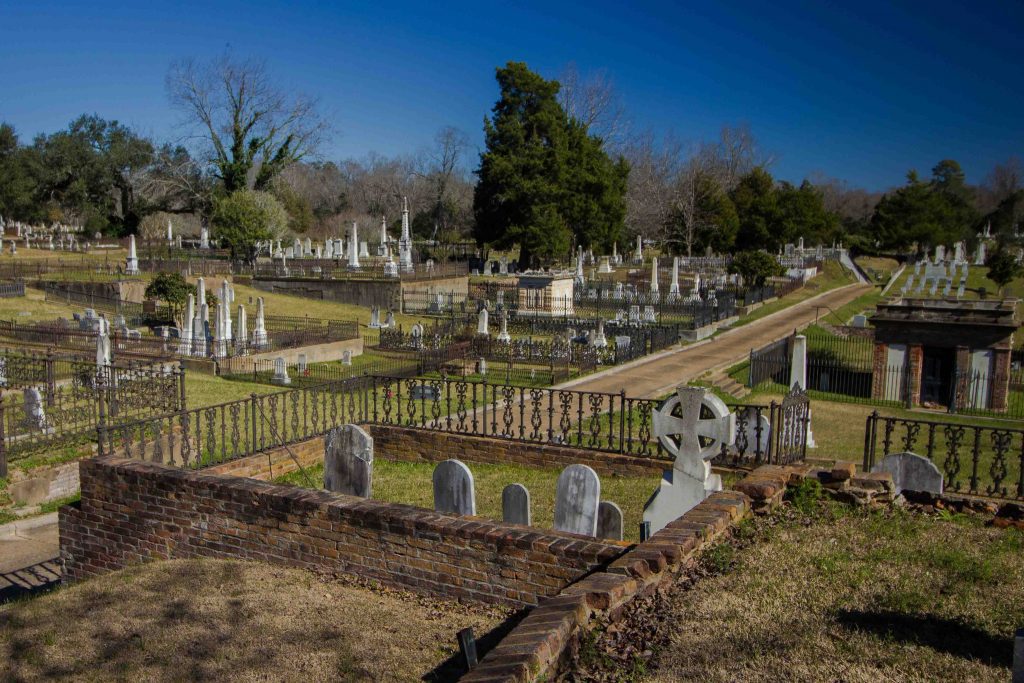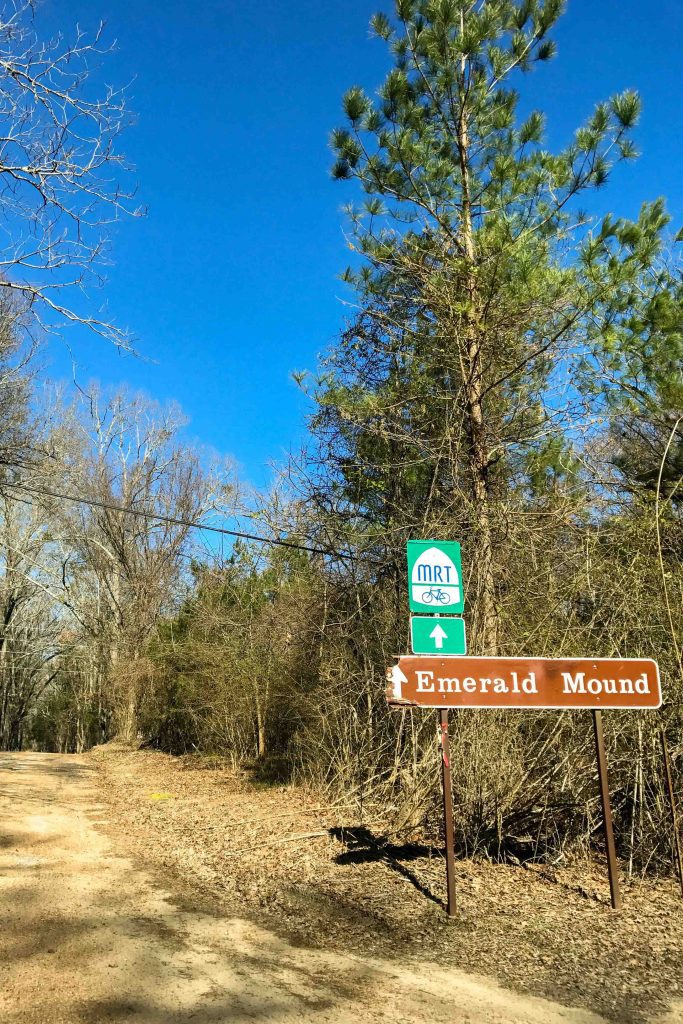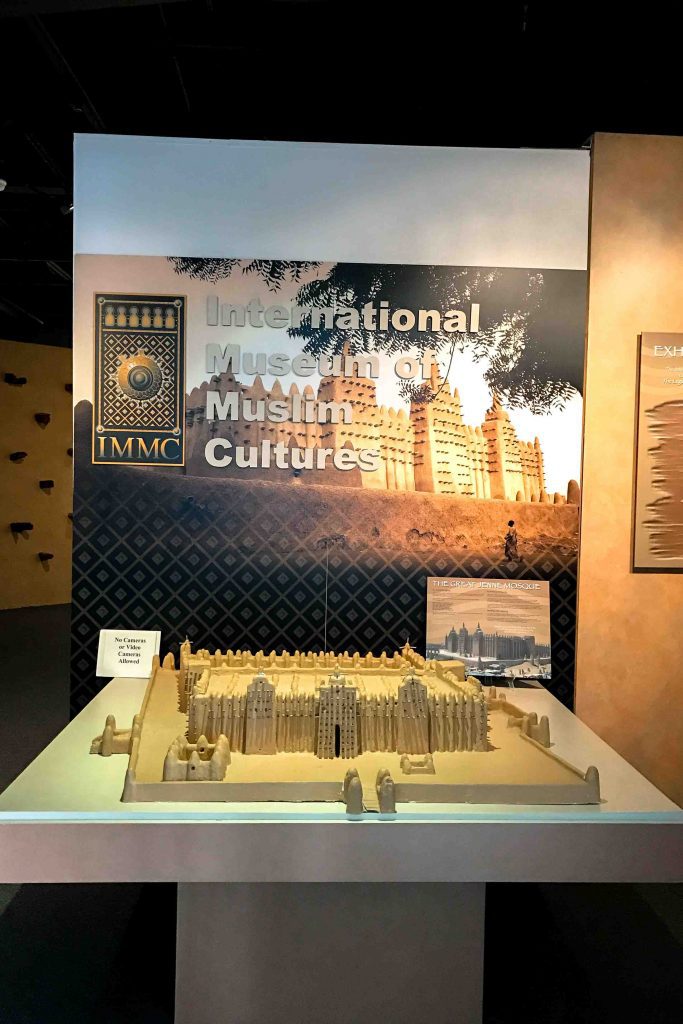If you were planning a U.S. road trip, what are the places you’d be least likely to go? Probably Midwestern states like Nebraska or Kansas and maybe Deep South ones – like Mississippi.
Judging by people’s reactions when we told them where we were headed, it’s not at the top of most itineraries. Sure, there are a few Vegas-style casinos and resorts along the Gulf Coast, but Mississippi’s more commonly known as the poorest and second-most obese state in America.
But it’s also the birthplace of blues music (a direct result of the residents’ economic troubles, to be sure), and is rich in Civil Rights history – meaning a Mississippi road trip was a key segment of our social justice-themed tour of the South.
Contents
Natchez, MS
After crossing from Louisiana into Mississippi, we made our first stop in Natchez, a charming town full of antebellum-era houses and streets that have been carefully constructed to preserve the beauty of the town’s heyday.
It’s the oldest city along the Mississippi River and was a major port in the 1800s. These days, Natchez’s economy relies a whole lot more on tourists flocking to its bed and breakfasts than it does on barges.
To kick off our first day in Natchez, we headed to Steampunk Coffee, where we figured we could get some caffeine and Jen could do some work while I strolled around town taking photos. As the name suggests, it was a blend of 1800s mad scientist style and Southern charm. Jen made the mistake of asking for the Wi-Fi password (their Yelp page lists free Wi-Fi!), and was promptly told that there was no Internet.
She spent the rest of the morning doing some offline work on her laptop, while the other patrons chatted loudly about any and everything with each other and with the staff, occasionally shooting her dirty looks. It was hard to tell if it’s bad Southern etiquette to be working at a coffee shop, or if this one was just too hipster to allow it. Either way, Steampunk is not a great place to get work done, but it’s an awesome spot to grab a quality cup of coffee, chat with a friend, and take in some interesting décor.
Natchez City Cemetery
While Jen poured over her work, I made my way to one of the most scenic places in Natchez, the City Cemetery, which is full of historical significance. Driving through, you can pick up an audio tour on a CD at the main gate, which tells some of the more colorful stories of the people entombed there.
This includes the touching story of Florence, a little girl who died of yellow fever in 1871 at the age of ten. Her tomb was built with a stairway leading down to her casket; Florence was frightened by thunderstorms, so her mother came to be by her side during every one of them after she died.
The casket also originally had a sheet of glass so her mother could actually look in on her, but it’s since been covered. Hers is one of the more elaborate tombs, and it was interesting to see how diverse the gravestones are, depending on the time period and the deceased’s social status.
The cemetery is open to the public any time before dusk. It’s an easy one-mile walk from downtown to the entrance, so you can also walk through instead of driving, but you’ll miss out on the audio tour if you don’t come by car.
Antebellum Homes in Natchez
Following my tour of the dead, I looked for a museum to learn about some of Natchez’s history. The owner of our bed and breakfast had mentioned that the Longwood house was a popular attraction, as it was being built just before the Civil War and the builders had to drop their tools and go off to fight before it was completed. Unfortunately, admission is $18, and that was more than I was willing to spend to see an antebellum house.

On the other hand, the William Johnson House, home to a free Black man during the antebellum period, was free to visit. This may have been the most interesting site I visited in Natchez. It chronicles the story of William Johnson, who began his life as a slave but was freed when he was eleven years old, and later became the barber of Natchez.
Pages from his diary are on display and tell the story of a man who had more freedom than most Blacks at that time, but still had to hold his tongue and defer to the white residents of the town. His profession gave him access to the gossip of Black and white customers alike, which he used to keep himself safe and his business thriving.
Ultimately, though, a neighbor killed him over a land dispute, and the case was never prosecuted; the only witness to the crime was Black, and the law did not allow Blacks to testify against whites in criminal cases.
The museum at the house isn’t that big, consisting of just the main room with the displays, along with a few upstairs rooms that have been reconstructed to look as they would have when Johnson inhabited it. It still took me over an hour to see everything, and it’s a fantastic place to hear a story that you don’t find in many textbooks and learn about how whites and free Blacks interacted in the antebellum period.
Forks of the Road
Another place I kept hearing about, both in the Natchez tourist literature and at the William Johnson House, was the Forks of the Road Slave Market. In the 1800s, it was one of the largest slave markets in America. Due to the decline of tobacco production in Virginia, slaves were shipped from there to the more profitable cotton, sugarcane, and indigo fields throughout the Deep South. Natchez’s status as a major port on the Mississippi River made it a prime location for shipping slaves down to the plantations of Louisiana.
I walked half an hour from the downtown area to reach the site marking Forks of the Road. While the walk was eye-opening, showing the non-touristy side of town and revealing some of the poverty Mississippi is sadly known for, the site itself was pretty disappointing.
Despite the market’s fascinating, albeit brutal and distressing, history, its location is only marked with a simple memorial and very little explanation. I hope the National Park Service, which recently acquired the land, will do more with this incredible piece of history and make it into a full-fledged museum. What happened here deserves a bigger voice.
Natchez Riverfront
At the end of the day, after all that history, I was looking for a peaceful evening with a little less intellectual stimulation. A stroll with Jen along the riverfront to take in the stunning views of the Mississippi River at sunset was just what I needed.
Afterward, we stopped by King’s Tavern; it’s the oldest building in Natchez and is rumored to be haunted by a few characters that were murdered during the tavern’s seedier days in the late-1700s. However, the restaurant serves amazing flatbread and has a good selection of microbrews and a great atmosphere, so it might be worth a ghostly encounter with them.
The Natchez Trace
As we were heading out of Natchez the following morning, we took the opportunity to check out the Natchez Trace, a scenic route made famous by merchants who carried their cargo overland before steamboats allowed for travel up the Mississippi.
Driving the road or hiking the trails that branch off from it is an idyllic way to spend the afternoon, and since there’s no commercial development along it, it’s a fantastic way to experience what Mississippi would have been like two hundred years ago.
Not too far down the Trace from Natchez, we thought it would be worthwhile to check out Emerald Mound, one of the largest archeological sites related to the Pre-Columbian Native Americans known as the Mound Builders. A 35-foot-tall embankment covered in grass, the mound basically looks like a large hill.
Admittedly, we found it to be a bit of a disappointment. Emerald Mound is the second-largest mound of its kind in the U.S., and there’s plenty of interesting information about it online, but there was almost no signage explaining the mound or why it was built there.
I would have expected the Park Service to do a better job of educating the public about a place like this. We just spent half an hour hiking around the mound and then set off for the next stop on our Mississippi road trip, Jackson!
Jackson, MS
We came to Jackson with few expectations, knowing almost nothing about the city beyond its status as the state capital. Treating it as a blank slate left us free to explore and to see places and sights that might not be on everyone’s itinerary. Our first stop for lunch might be one of the best examples of this.
The High Noon Café isn’t something you would expect in Jackson: a vegan restaurant, serving a special of red beans and rice without ham (probably a jailable offense down in New Orleans), inside a health-food store that would please any East Coast hipster. We were pleasantly surprised. The lunch was delicious, and we even picked up some groceries at the health-food store since our hotel in Jackson had a kitchen.
Our next day started off with the most quintessential of Southern breakfasts: bagels with cream cheese (you thought I was going to say grits, didn’t you?). All joking aside, you wouldn’t expect Mississippi to have great bagels, but we wanted to check out Beagle Bagel Café, rated the best in the state. It didn’t let us down.
The café is inside an open-air shopping mall that looked like it’d be more at home in southern California (complete with a Whole Foods and a Pure Barre). Their bagels had a decent amount of outside crunch and inside chewiness. Were they as good as our favorite bagels in Boston? No, but still a great way to start the day.
International Museum of Muslim Cultures
Our first museum stop was at the International Museum of Muslim Cultures, which might not be a stop you’d expect on a Mississippi road trip. Jackson, in the heart of the Bible Belt, doesn’t seem like a place you’d find many Muslims. However, that would be ignoring the African-Americans who joined the Nation of Islam during the Civil Rights era.
The Muslim community has grown over the years and now numbers around 5,000 for the state. The museum was created in an effort to build a bridge between Mississippi’s non-Muslim residents and a culture that is probably very foreign to the majority of them.
The price of admission is a little high ($13 for adults/$7 for children), but we didn’t see any other patrons during our visit, so maybe this is just the cost of keeping the museum open when there are so few visitors.
There’s quite a bit of history packed into the small museum, with exhibits illustrating Timbuktu’s role as an educational hub during the Middle Ages, the influence of Muslim culture on Spanish history, and instruments from the Islamic world that have been incorporated into modern popular music.
There aren’t too many opportunities to learn about Muslim cultures and history in America, particularly in the Deep South, so the museum is definitely worth a visit.
Downtown Jackson
From there, we strolled around downtown Jackson, noticing how quiet it seemed compared to our recent experiences in New Orleans. Looking for lunch, we settled on a highly-rated local restaurant that was said to have the best pizza in Jackson.
Upon arriving, we were a little unsure about that; it’s located inside a non-descript building that doesn’t look like it’s been updated in decades. But as it turns out, Pizza Shack cooks up some delicious pies, with fresh toppings and a little-bit-on-the-thick-side crust. It’s a great place to see where the locals hang out, too.
Smith Robertson Museum
Our last museum stop in Mississippi, the Smith Robertson Museum, is located inside Jackson’s first school for African-American children, which is also famous for alum Richard Wright, whose books like Native Son influenced race relations in the 1950s.
One of our favorite exhibits at the museum was “Fields to Factory,” which looked at the Great Migration of the early-1900s, whereby African-Americans left the South for industrial jobs in the Upper-Midwest. It tells a fascinating story, portraying a life without the legally codified discrimination found in the South, but also one of loneliness and isolation in new communities.
Other interesting exhibits at the museum cover James Meredith’s struggle to be admitted to the segregated University of Mississippi in 1961 and the history of the African slave trade. This is a really budget-friendly museum for understanding the Civil Rights Movement, so if you only visit one in the Deep South, this might be the best choice.
Road tripping through Mississippi showed us that the state had a lot more to offer than we would have thought, and we didn’t even get to check out its famous music scene. It’s never a bad idea to plan another road trip, though.
What would you be interested in learning about on a Mississippi road trip?
PIN IT!
















Leave a Reply